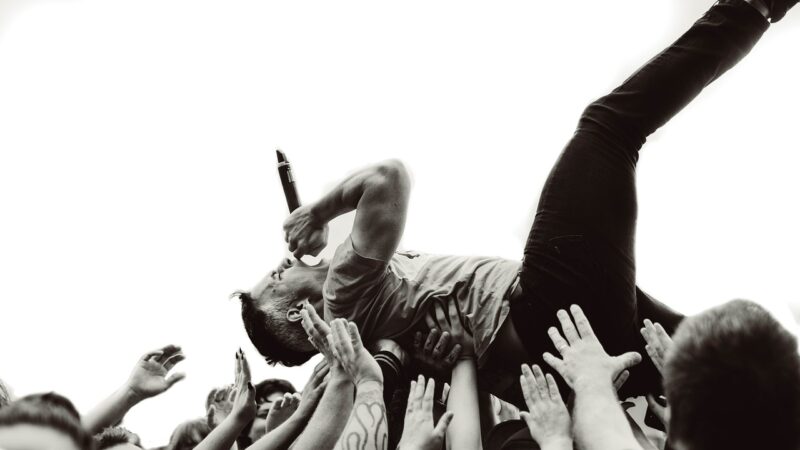
The mid-2000s marked a cultural phenomenon that influenced music, fashion, and even the way we expressed our emotions: the emo scene. Emerging from the underground music circuit in the late ’90s, emo bands began to gain mainstream traction, captivating the hearts of millions of fans worldwide. But what was it about these bands and their music that resonated so deeply? Let’s take a nostalgic journey back to this vibrant era that sculpted a generation.
1. The Birth of Emo: A Brief Background
Emo, short for emotional hardcore, originated from the punk rock scene in the United States during the 1980s. Bands like Rites of Spring and Embrace pioneered this era, blending melodic instrumentation with introspective, often confessional lyrics. However, it wasn’t until the turn of the millennium that emo exploded into the mainstream, led by bands like My Chemical Romance, Fall Out Boy, and Dashboard Confessional.
With their catchy hooks, expressive lyrics, and a penchant for vulnerability, these bands resonated with a youthful audience grappling with identity, heartbreak, and societal pressures. Emo music provided a safe space for those struggling to articulate their feelings, making it an outlet that was both cathartic and relatable.
2. The Aesthetic Appeal of Emo Culture
Not just a genre of music, emo was also marked by a distinct aesthetic. The fashion and lifestyle surrounding emo bands became a significant part of the culture.
- Fashion Statements: Slim-fit jeans, band T-shirts, and studded belts became hallmarks of the emo aesthetic. Layered hairstyles, often dyed in vibrant colors or black, complemented the iconic look, allowing individuals to express their persona visually.
- Cultural Symbols: Emo symbols such as the heart, stars, and rain clouds were frequently used in artwork and attire, embodying the emotional depth that the music conveyed. This visual language created a sense of belonging among fans, who could identify with the shared symbols of their subculture.
The aesthetic was not just about fashion; it was about rebellion, identity, and solidarity within a community that often felt misunderstood. At its height, the emo scene was more than a trend; it was a movement.
3. Lyricism: The Heartbeat of Emo Bands
The emotive lyrics that characterized emo music played a vital role in its connection with fans. These songs delved deep into themes of love, loss, isolation, and personal conflict.
- Relatable Themes: Songs often described feelings of despair and longing, which made fans feel seen and understood during a tumultuous time in their lives. Tracks like “Helena” by My Chemical Romance or “The Great Escape” by Boys Like Girls offered narratives that mirrored many fans’ experiences, creating a profound emotional bond.
- Poetic Structures: Emo lyrics were noted for their poetic qualities, often incorporating metaphors and vivid imagery. This literary aspect allowed listeners to interpret the music on various levels, invoking personal reflections and connections through the songs they cherished.
It wasn’t unusual for fans to relate deeply to the stories told in these songs; they often held a mirror up to the struggles and joys of being a teenager.
4. Connection with Fans: The Emo Community
The emo scene provided not just music but a community where individuals could share their feelings without judgment.
- Forming Bonds: Emo concerts and local shows became more than just concerts; they were gatherings where fans could share their stories, providing comfort and camaraderie in vulnerability. This atmosphere fostered friendships that often lasted a lifetime.
- Empowering Messages: Bands often used their platforms to discuss mental health, encouraging fans to seek help and embrace their feelings. The open dialogue surrounding emotional struggles made fans feel less alone in their hardships, promoting awareness and understanding in a culture often stigmatized.
The unifying element of shared experiences and emotional releases allowed emo fans to find the strength in numbers, creating an inseparable bond over their love for the music.
5. The Evolution and Decline of Emo Bands
As the late 2000s approached, emo began to evolve. Mainstream popularity led to a dilution of genuine emo music, with some bands transitioning into pop-punk styles, further alienating hardcore fans. This shift led to the perception that emo was “selling out,” giving rise to criticism from within and outside the community.
However, while the mainstream emo wave waned, many artists continued to innovate and adapt. Bands like Paramore and Brand New explored new sounds, bridging emo with alternative and pop influences. Even today, echoes of the emo genre can be found in the music of contemporary bands and in the resurgence of emo nights across clubs nationwide, proving that its legacy lives on.
6. Emo Today: A New Generation of Fans
Despite facing waves of criticism and change, the essence of emo remains intact. In recent years, younger generations have embraced emo styles and sounds, leading to a renaissance of interest in the scene.
- Social Media Revival: Platforms like TikTok have reignited interest in emo music, with users sharing nostalgic throwback songs while introducing younger audiences to legendary bands. This fusion of old and new has enabled the emo culture to evolve while staying true to its roots.
- Inclusive Spaces: Newer emo bands and artists are also embracing and promoting diversity within the genre, creating safe and inclusive spaces for all to express their emotions and identities openly.
Emo has transcended time, continually resonating with new audiences and remaining a vital part of alternative music.
Conclusion: Emo as a Cultural Touchstone
Emo bands from the mid-2000s left an indelible mark on music, culture, and the collective consciousness of a generation. They spoke the unspeakable, articulated feelings that many might have buried, and fostered a community built on shared experience and acceptance.
Though the era may have passed, the emotions evoked by those catchy tunes and heartfelt lyrics resonate just as deeply today. The emo scene stands as a testament to the power of music to unite, heal, and inspire us to embrace our vulnerabilities. As we look back on those iconic bands, it’s clear that the legacy of mid-2000s emo will forever remain a cherished chapter in the history of music.






